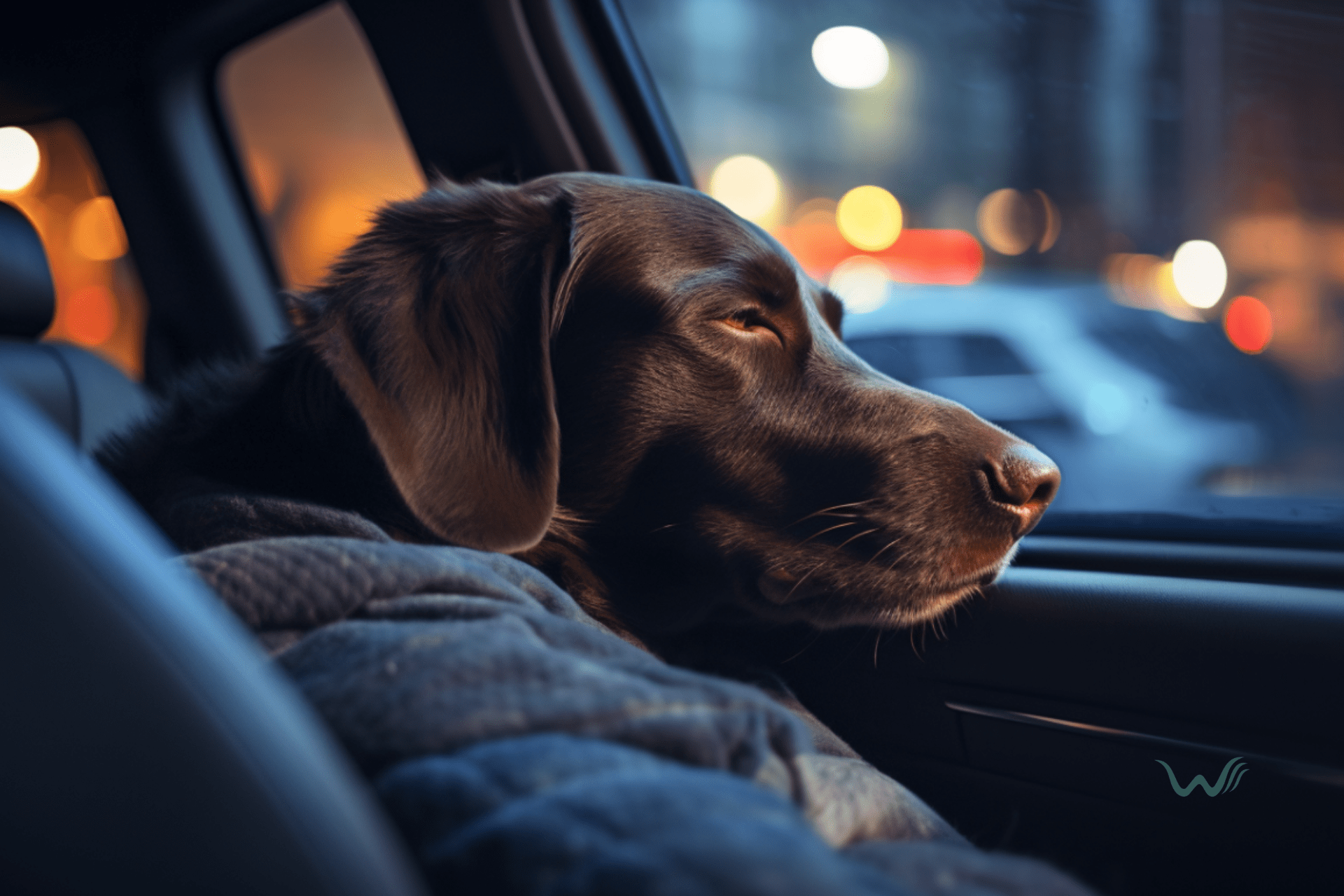Motion sickness, a common ailment among humans, can also affect our beloved canine companions. It’s a distressing experience for puppies, causing discomfort and anxiety. As responsible pet owners, it’s essential to understand the causes, symptoms, and effective strategies to manage motion sickness in puppies.
This comprehensive guide will delve into the physiological and environmental factors that contribute to motion sickness, the telltale signs to watch out for, and practical prevention and treatment options. We’ll also explore long-term management strategies to minimize the impact of motion sickness on your puppy’s well-being.
Causes of Motion Sickness in Puppies
Motion sickness in puppies, a common issue during travel, is triggered by various factors. Understanding these causes helps pet owners manage and prevent discomfort during car rides, boat trips, or air travel.
Motion sickness in puppies stems from a mismatch between the signals received by the puppy’s vestibular system (inner ear) and visual and proprioceptive systems. This discrepancy creates confusion and nausea.
Age and Breed
Puppies are more susceptible to motion sickness than adult dogs. Their immature vestibular systems and underdeveloped balance mechanisms make them more vulnerable to disorientation and nausea during movement.
Certain breeds, such as Bulldogs, Pugs, and French Bulldogs, have a higher predisposition to motion sickness due to their flat faces and shortened nasal passages, which can restrict airflow and exacerbate breathing difficulties during travel.
Environmental Factors
Environmental factors also play a role in motion sickness. Poor ventilation, extreme temperatures, and strong odors can trigger nausea in puppies.
Rapid acceleration, deceleration, and sudden turns can intensify motion sickness symptoms. Puppies may also experience discomfort if they are not properly restrained during travel.
Temperament
Puppies with anxious or nervous temperaments are more likely to experience motion sickness. Anxiety can heighten their sensitivity to movement and make them more prone to nausea.
Symptoms of Motion Sickness in Puppies
Puppies experiencing motion sickness may exhibit a range of signs and symptoms, including:
Behavioral Changes
* Restlessness and agitation
- Drooling and excessive salivation
- Panting and rapid breathing
- Vomiting and regurgitation
Physiological Responses
* Increased heart rate and respiration
- Dilated pupils
- Pale gums and lethargy
Prevention of Motion Sickness in Puppies
Taking precautions can help prevent motion sickness in puppies during travel. Here are some effective strategies:
Gradual Exposure
Start with short car rides and gradually increase the duration as your puppy becomes more comfortable. This allows them to adapt to the motion and reduce the likelihood of nausea.
Anti-Nausea Medications
In severe cases, anti-nausea medications like Dramamine or Cerenia can be administered under the guidance of a veterinarian. These medications help reduce nausea and vomiting during travel.
Treatment of Motion Sickness in Puppies

If your puppy exhibits signs of motion sickness, there are several treatment options available to alleviate their discomfort and prevent future episodes.
Veterinarians may recommend administering anti-nausea medications to puppies experiencing severe motion sickness. These medications work by blocking the neurotransmitters responsible for nausea and vomiting. Follow the veterinarian’s instructions carefully regarding dosage and administration.
Natural Remedies
Natural remedies may also provide relief for mild cases of motion sickness in puppies. Ginger, known for its anti-nausea properties, can be offered in small doses (1-2 teaspoons) mixed with food or water. Acupuncture has also been shown to be effective in reducing motion sickness symptoms in dogs, although its efficacy may vary.
Long-Term Management of Motion Sickness in Puppies
Addressing motion sickness in puppies is not a one-time solution; it requires a comprehensive and sustained approach. Implementing long-term strategies can effectively reduce anxiety, prevent future episodes, and enhance the puppy’s overall well-being.
Training and Desensitization
Training and desensitization play a crucial role in managing motion sickness in puppies. Gradually exposing your puppy to car rides in short intervals, starting with stationary sessions and gradually increasing the duration and distance traveled, helps them adapt to the motion and reduce their anxiety.
Positive reinforcement during these sessions, such as treats or praise, further enhances their comfort level.
Comfortable Environment
Creating a comfortable and supportive environment for puppies prone to motion sickness is essential. Ensuring proper ventilation in the car, providing a secure and comfortable crate or harness, and avoiding feeding them immediately before a ride can help minimize discomfort and anxiety.
Additionally, providing familiar scents, such as a blanket or toy from home, can offer a sense of security and reduce stress.
Final Summary

Managing motion sickness in puppies requires a multifaceted approach that encompasses prevention, treatment, and long-term strategies. By understanding the underlying causes and implementing effective measures, we can help our furry friends enjoy stress-free and comfortable journeys.
Helpful Answers
What are the common causes of motion sickness in puppies?
Motion sickness in puppies can be triggered by various factors, including: – Physiological factors: Puppies have a more sensitive vestibular system than adult dogs, making them more susceptible to motion-induced nausea. – Environmental factors: Car rides, boat trips, or air travel can create motion that disrupts the puppy’s balance and equilibrium.
What are the signs and symptoms of motion sickness in puppies?
Common signs of motion sickness in puppies include: – Behavioral changes: Restlessness, drooling, panting, and vomiting. – Physiological responses: Increased heart rate, respiration, and dilated pupils.
How can I prevent motion sickness in my puppy?
Prevention is key: – Gradually expose your puppy to motion, starting with short trips and gradually increasing the duration. – Use anti-nausea medications, such as Dramamine or Cerenia, as directed by your veterinarian.
What are the treatment options for motion sickness in puppies?
Treatment options include: – Administering anti-nausea medications. – Using natural remedies, such as ginger or acupuncture (consult with your veterinarian for safety and effectiveness).
How can I manage motion sickness in my puppy over the long term?
Long-term management strategies: – Training and desensitization to reduce anxiety and prevent future episodes. – Creating a comfortable and supportive environment during travel.




